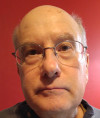"Carry-in, carry-out": It's Working, I Think

|
I'm Steve Newcomb, a Canandaigua resident since 2011, and a property owner here since 2012. Since then, I've been collecting trash in Kershaw and Lagoon Parks, as well as a section of Lakeshore Drive. The original version of this website, dated 2020, was based on my conviction that there should be trash receptacles in both parks. Since then, experience has led me to change my mind. I'm now convinced that "carry in, carry out" is, in fact, the best policy. It results in less abandoned trash. I retain my other convictions about trash in the parks, including my conviction that public provides the parks to the public for the benefit of the public. I continue to believe that the benefits of the parks are greatly diminished by the presence of trash. The presence of trash conveys a sense of public disorder, as opposed to the beneficial sense that we all share in a polity that functions as it should. I'm so enthusiastic about "carry-in, carry-out" that I buy "t-shirt" bags and give them to people in the park who appear to have arrived with trash but without a practical way to clean up after themselves. Everyone is uniformly grateful for the bags, and there's less abandoned trash. It's easy to tell where the bulk of the remaining trash comes from: it comes from local merchants who sell ice cream, drinks, etc. in disposable containers. This source of trash could be mitigated, I think, by raising public awareness of the fact that there are no trash facilities in the parks, and by encouraging those merchants to provide carry-out bags to those who intend to carry products into the parks. If we can pass out bags to the public to encourage them to clean up after their dogs, then we can also pass out bags to clean up after themselves. Local merchants please note! My sense is that the parks are more heavily used when they are cleaner. I did not expect that, but it makes sense. One effect of that is that when people come to the parks from elsewhere in the region, Canandaigua merchants do well. The parks are an important attraction and an asset to our prosperity, as well as being beneficial to our health. |